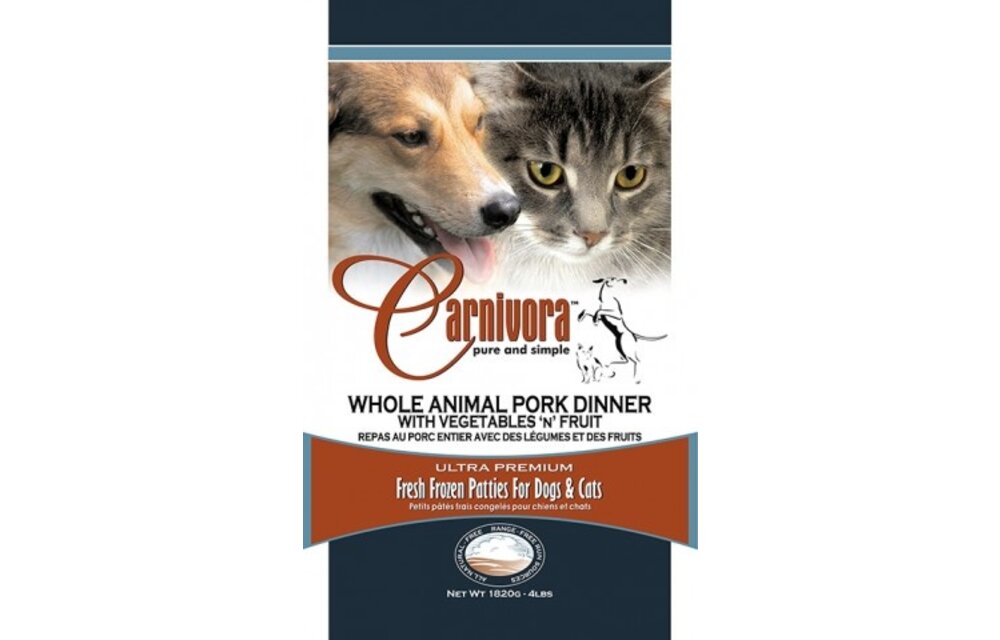
Carnivora Pork Dinner 4lb
Available in store
Close- FREE Local Delivery

Available in store
Close
Finely ground whole pork carcass and a 5% veggie and fruit mix which includes finely ground romaine lettuce, bok choy, celery, carrots, apples, pears, blueberries.
Pork patties contain the whole animal except the heads, hides, bladder and large intestine (manure) and feet. We do not use non-edible bones as these would not be consumed in nature due to their density. Organs make up approximately 8 to 10 % of the patties - this includes lungs, liver, heart and kidneys.
On average over all our protiens, patties are composed of 66% muscle meat, 7% bone, 10% organs, 7% blood and 10% fat. Other than the vegetables and fruit in our dinners we DO NOT add anything to our foods. You may supplement as needed. Please ask for a brochure or visit our website for healthcare and supplement products.
Commonly pork has been referred to as “the other white meat”! In fact, pork is actually considered a red meat. This is because all cloven-hoofed animals, like pigs, are classified as “red”. It is the most commonly consumed red meat worldwide, especially in eastern Asia. Being high in protein and rich in many vitamins and minerals, lean pork can be an excellent addition to a healthy diet for your pet. Pork contains varying amounts of fat depending on the level of trimming and various other factors. The fatty acid composition of pork is slightly different from the meat of ruminant animals, such as beef and lamb. It is low in conjugated linoleic acid (CLA) and is slightly richer in unsaturated fats.
Growth hormones are not used in the production of pork in Canada. Canadian pork is regarded as the safest pork in the world due to regulation put in place for the producers by the CFIA. Biosecurity measures on pig farms have become very sophisticated and effective. The widespread adoption of improved feeding practices and high levels of biosecurity and hygiene have virtually eliminated the presence of trichinae in Canada and the United States. Because most pigs raised for food today are housed in barns instead of outdoors, facility workers can carefully manage barn biosecurity to help keep out disease-causing pathogens. Now that the pathogen related to trichinosis is virtually eliminated, the risk of trichinosis from pork is virtually eliminated, too. Concerns about H1N1 are non-existent as it is not possible to catch the virus by eating pork or pork products.